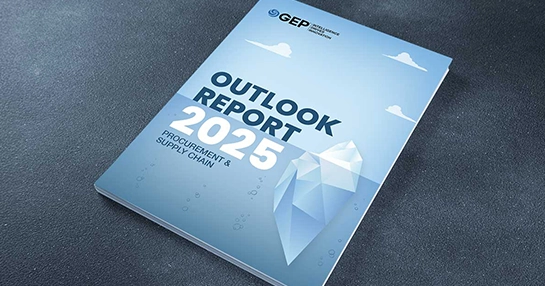
Struggling with Sourcing? You Need AI-Powered RFP Software
- Sourcing teams often spend a lot of time creating and reviewing RFPs.
- RFP software automates these time-consuming tasks and allows stakeholders to work together in real time.
- It also facilitates real-time auctions to help you boost competition and capture the most favorable price points.
April 10, 2025 | Procurement Software
What does the RFP process look like in your business? Does your souring team still rely on paperwork, telephonic conversations with suppliers and email follow-ups? Is it spending a lot of time creating, reviewing or responding to proposals?
All this means endless spreadsheets, countless emails and constant back-and-forth with stakeholders from different teams. Also, today’s RFPs are longer, more complex and come with shorter deadlines.
No doubt, shortlisting the right suppliers is top priority for sourcing teams. This involves evaluating their capabilities and track record as well as scanning their proposals.
But you don’t have to invest a lot of time and effort in this process by engaging in all this paperwork.
The question now is: How can you streamline the end-to-end process? Can you automate tasks like creating questionnaires, collecting and analyzing responses and communicating with vendors? Let’s find out.
What Can RFP Software Do?
With RFP software, you don’t have to struggle with RFP creation or wait for inputs from multiple stakeholders. You also don’t have to burden your team with time-consuming evaluations.
RFP software automates all these tasks, removes silos and makes it easier to collaborate as a team. It automates the process of creating, issuing, evaluating and managing RFPs. It also provides a centralized platform for collaboration, document management, and analysis.
Here are the key capabilities of AI-powered RFP software.
Collaborative RFP Authoring:
Different teams can co-author RFPs and write the proposals together. Flexible forms, intuitive templates, and consistent workflows allow colleagues to quickly build multi-line proposals and quotes.
Real-time Auctions:
With RFP software, you get a real-time auction platform to capture the most favorable price points. You can stimulate more competition for your business and access a larger pool of suppliers. The result is improved cost efficiencies, favorable pricing and better terms.
Supplier Intelligence:
RFP software allows procurement to access deep intelligence of existing and potential suppliers across categories and regions in one place. Access detailed supplier profiles, scorecards and past performance data to make well-informed sourcing decisions.
Sourcing Repository:
You can access a central sourcing repository comprising a library of best-practice templates. As a result, you have to spend less time on the bidding process by using a templated structure and best-practice workflows. You can also save new questionnaires in the repository for easy access later.
Dynamic Sourcing Dashboards:
Access dynamic sourcing dashboards that show all sourcing events and activities in real time. Monitor performance KPIs, measure strategic alignment of sourcing activities and get actionable insights to improve the sourcing process.
Easy Approvals:
RFP software allows users to add senior colleagues as approvers who can sign off an RFP before you send it to the suppliers. It can also add another team as an evaluator to evaluate and score the supplier responses.
Move Beyond Pricing, Get Unbiased Data-Driven Evaluations
A key challenge for sourcing teams is the amount of time they currently invest in evaluating proposals. At times, these evaluations are subjective and can be biased. AI-powered software addresses this problem by applying consistent criteria to all submissions, evaluating proposals on delivery timelines, compliance, technical fit and other metrics.
Generative AI’s large language models can also aid in evaluating lengthy proposals. They can produce concise summaries for review teams, who then take less time to assess proposals.
Again, traditional RFP evaluations often give a lot of weightage to cost in evaluating proposals. Modern RFP software takes a more holistic approach in this process.
AI algorithms leverage data analytics and analyze vendor proposals against historical performance metrics, market benchmarks and risk factors. In addition to pricing, they bring into play qualitative metrics such as innovation potential, sustainability practices and service reliability. The inclusion of several metrics allows a more comprehensive evaluation.
Also Read: AI Integration in RFP Process
How to Choose the Right RFP Software
It’s important to do some groundwork before you start hunting for the right RFP software. Begin by identifying gaps in the current RFP process. Engage with relevant stakeholders to identify disjointed workflows, fragmented information across different teams, time-taking processes, and other pain points. Determine specific business requirements, RFP frequency, overarching goals, etc.
Prioritize tools that can automate routine tasks in RFP management. From creating questionnaires, communicating with vendors, and tracking deadlines to evaluating and scoring responses, the tool should be able to efficiently handle all these tasks.
To make it easy for stakeholders to work together, look for tools that offer collaboration features such as real-time editing, commenting and role-based access. Check if the tool has analytics capabilities to help you evaluate vendor proposals and engage in data-driven decision-making. Also, check that the RFP software integrates with your CRM and ERP systems and other existing tools.
Finally, don’t forget to check the tool’s ease of use. If it’s not intuitive, your team will most likely not use it and that would defeat the whole purpose.
After all, the right RFP software is not only about features, but it’s more about finding the perfect fit for your sourcing team.
Learn how GEP’s AI-powered RFP software can streamline your sourcing process.



